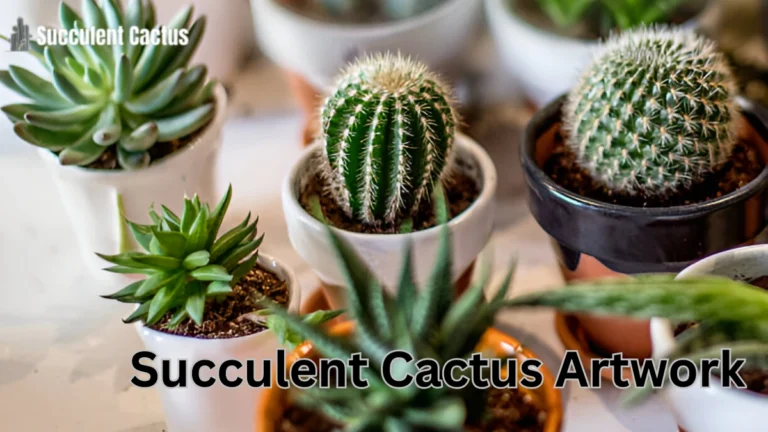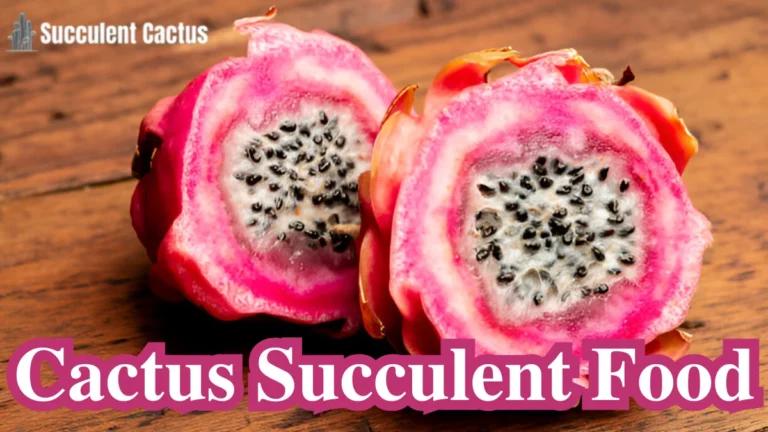The Beauty of Succulent Cactus Purple: A Complete Guide

Succulent cactus plants have long been admired for their hardy nature and vibrant colors. Among these, succulent cactus purple varieties stand out due to their striking hues and aesthetic appeal. From their natural beauty to their versatility in gardening and décor, these plants are an exciting addition to any collection. In this guide, we’ll explore everything you need to know about purple succulents and cacti, from care tips to creative uses.
What Are Purple Succulent Cactus Plants?
Defining Succulent Cactus Purple
Purple succulents and cacti are plants that exhibit purple tones due to their unique pigmentation, which is influenced by environmental factors like sunlight and stress. These plants belong to different genera but share one common feature: their stunning purple shades.
Examples of Purple Succulent Cactus Plants:
- Purple Heart (Tradescantia pallida): Known for its deep purple leaves.
- Echeveria Perle von Nürnberg: A rosette-shaped succulent with soft purple tones.
- Purple Prickly Pear (Opuntia violacea): A cactus with vibrant purple pads.
These plants gain their colors due to high concentrations of anthocyanins, a pigment that protects them from harsh sunlight and other stress factors.
Why Are Purple Succulents So Popular?
Purple succulents have gained immense popularity due to their:
- Aesthetic Appeal: The vibrant purple hues add a unique touch to gardens and indoor spaces.
- Ease of Care: Like most succulents, they require minimal maintenance.
- Versatility: Suitable for both landscaping and container gardening.
Quote: “Purple succulents are living works of art, bringing a splash of color to any space with minimal effort.”
Natural vs. Artificial Coloring
Some succulents achieve their purple shades naturally, while others are dyed artificially.
Natural Purple Succulents:
- Exhibit color changes based on sunlight and temperature.
- Retain their vibrant hues for years.
Artificially Dyed Succulents:
- Achieve brighter, more vibrant colors.
- May lose their coloration over time as the dye fades.
Always choose natural succulents for sustainability and long-term beauty.
Popular Varieties of Succulent Cactus Purple
Echeveria Varieties
Echeverias are some of the most popular purple succulents due to their rosette shapes and soft colors.
Top Echeveria Choices:
- Echeveria Perle von Nürnberg: A classic purple-toned variety.
- Echeveria Afterglow: Features bold purple and pink leaves.
- Echeveria Lilacina: Known as the “Ghost Echeveria” for its pale lavender tones.
These varieties thrive in full sun and require well-draining soil.
Purple Cactus Species
Purple cacti are unique and captivating due to their distinctive shapes and bold colors.
Popular Purple Cacti:
- Purple Prickly Pear (Opuntia violacea): Features paddle-shaped pads that turn deep purple in the sun.
- Gymnocalycium mihanovichii (Moon Cactus): Often grafted, with vibrant purple tops.
- Mammillaria glochidia: A small cactus with hints of purple in its spines.
Rare Purple Succulents
Rare purple succulents can elevate any collection.
Examples of Rare Varieties:
- Sedum ‘Purple Emperor’: A striking plant with deep purple leaves.
- Aeonium Arboreum ‘Zwartkop’: A tall, dark-purple succulent.
- Crassula Capitella ‘Campfire’: Displays a purple hue under bright sunlight.
Caring for Succulent Cactus Purple
Light and Temperature Needs
Purple succulents and cacti thrive in bright, indirect sunlight.
Light Tips:
- Place them in locations that receive 4–6 hours of sunlight daily.
- Use grow lights for indoor plants during winter months.
Temperature Range:
- Ideal: 60°F–80°F.
- Protect them from frost and extreme heat.
Watering Purple Succulents
Like all succulents, purple varieties are drought-tolerant and require careful watering.
Watering Guidelines:
- Water only when the soil is completely dry.
- Reduce watering during the winter dormancy period.
- Avoid overwatering to prevent root rot.
Pro Tip: Use the “soak and dry” method for best results.
Soil and Fertilizer Requirements
Soil Needs:
- Use well-draining soil or a cactus mix.
- Add sand or perlite to improve drainage.
Fertilizer Tips:
- Feed once a month during the growing season with a succulent fertilizer.
- Avoid over-fertilizing, as it can reduce the intensity of the purple color.
Designing with Purple Succulent Cactus
Landscaping Ideas
Purple succulents are perfect for outdoor landscaping due to their bold colors and unique shapes.
Landscaping Tips:
- Create contrasts with green or silver succulents.
- Use them as focal points in rock gardens.
- Pair with ornamental grasses for texture.
Container Gardening
Purple succulents thrive in pots and containers, making them ideal for small spaces.
Container Ideas:
- Use colorful ceramic pots to complement the purple tones.
- Arrange multiple varieties in a single container for a striking display.
- Ensure proper drainage by adding pebbles or sand to the base of the pot.
Indoor Décor
Purple succulents add elegance to indoor spaces.
Indoor Placement Tips:
- Place them on windowsills with ample sunlight.
- Use terrariums for a modern touch.
- Add them to office desks or living room shelves for a pop of color.
Benefits of Growing Purple Succulent Cactus Plants
Aesthetic Appeal
One of the biggest benefits of growing succulent cactus purple varieties is their ability to enhance any space with their vibrant color. The bold purple tones bring a unique touch, making them an excellent addition to gardens, patios, and indoor décor.
Visual Benefits:
- Adds contrast to green, silver, or pastel succulents.
- Creates a striking focal point in any arrangement.
- Works well in monochromatic gardens for a cohesive look.
Purple succulents are also versatile in design. Whether used in modern minimalist spaces or lush, tropical-themed gardens, their adaptability makes them a top choice.
Low Maintenance
Purple succulents and cacti share the same low-maintenance characteristics as their green counterparts. They’re perfect for beginners or those with busy lifestyles.
Why They’re Easy to Care For:
- Require infrequent watering.
- Adapt to a wide range of climates and light conditions.
- Thrive in poor soil with proper drainage.
Unlike many plants that demand constant attention, succulents can thrive with minimal effort, making them ideal for people looking for a hassle-free way to add color to their homes or gardens.
Environmental Benefits
Succulent cactus plants, including purple varieties, contribute to a sustainable and eco-friendly lifestyle.
Key Environmental Advantages:
- Drought Tolerance: Perfect for regions facing water scarcity.
- Air Purification: Succulents absorb carbon dioxide and release oxygen, improving indoor air quality.
- Pollinator Attraction: Some varieties, such as the Purple Prickly Pear, produce flowers that attract bees and other pollinators.
By incorporating purple succulents into your garden or home, you not only enjoy their beauty but also contribute positively to the environment.
Common Challenges When Growing Purple Succulents
Color Fading
One common issue with purple succulents is the loss of their vibrant hue. This can happen for various reasons.
Reasons for Color Fading:
- Insufficient sunlight exposure.
- Overwatering or poor drainage.
- Stress due to pests or diseases.
To restore the color, adjust the light exposure, ensure proper watering habits, and check for pest infestations.
Pests and Diseases
While succulents are hardy, they’re not entirely immune to pests and diseases.
Common Pests:
- Mealybugs: Appear as white cotton-like patches on leaves and stems.
- Spider Mites: Cause webbing and discoloration on plants.
- Fungus Gnats: Thrive in overwatered soil.
Disease Issues:
- Root rot caused by excessive moisture.
- Leaf spotting due to fungal infections.
Use natural remedies like neem oil, or choose systemic treatments for severe infestations. Always check for pests when introducing new plants to your collection.
Overcrowding
Purple succulents often grow slowly, but overcrowding can still be an issue in small containers or tight arrangements.
How to Prevent Overcrowding:
- Regularly prune offsets or leaves.
- Repot succulents in larger containers when necessary.
- Space plants adequately in outdoor gardens.
Overcrowding can lead to poor airflow, increasing the risk of diseases. Ensuring proper spacing keeps your succulents healthy and vibrant.
Propagating Purple Succulent Cactus Plants
Propagation Techniques
Purple succulents can be propagated easily, allowing you to expand your collection or share with friends.
Methods of Propagation:
- Leaf Cuttings: Remove a healthy leaf, let it callus for 1–2 days, and plant it in well-draining soil.
- Stem Cuttings: Ideal for taller succulents, such as Aeoniums.
- Offsets: Separate baby plants growing at the base of the parent plant.
Propagation ensures a sustainable way to grow your collection and reduces the need for new purchases.
Best Time to Propagate
The best time to propagate succulents is during their active growing season, usually spring or summer.
Why Spring/Summer is Ideal:
- Warmer temperatures promote root development.
- Longer daylight hours boost photosynthesis.
Avoid propagating during winter, as most succulents enter dormancy and growth slows significantly.
Propagation Care Tips
After propagating, provide optimal conditions to ensure success.
Post-Propagation Care:
- Mist soil lightly instead of soaking it.
- Keep the new plants in bright, indirect sunlight.
- Avoid fertilizing until roots are established.
Proper care ensures a high success rate for propagation and helps your new plants thrive.
Using Purple Succulents in Creative Designs
Wedding Décor
Purple succulents add elegance to weddings, whether used in bouquets, centerpieces, or favors.
Creative Wedding Ideas:
- Combine with white roses for a soft, romantic look.
- Use as table centerpieces paired with candles.
- Offer small potted succulents as guest gifts.
Their longevity ensures that wedding decorations remain beautiful long after the event.
Vertical Gardens
Purple succulents can be incorporated into vertical gardens for a stunning display.
How to Create a Vertical Succulent Garden:
- Use a sturdy frame with shallow pockets.
- Arrange succulents in contrasting colors and textures.
- Water sparingly to prevent soil from becoming waterlogged.
Vertical gardens save space and make excellent focal points in outdoor patios or indoor walls.
Holiday Decorations
During holidays, purple succulents can bring a festive twist to traditional décor.
Ideas for Holiday Décor:
- Use them in wreaths for a modern touch.
- Add to Thanksgiving or Christmas table settings.
- Pair with fairy lights for a magical effect.
Their ability to retain color and shape makes them an excellent choice for holiday arrangements.
Purple Succulent Cactus Care Mistakes to Avoid
Overwatering
Overwatering is the most common mistake when caring for succulents.
Signs of Overwatering:
- Mushy leaves or stems.
- Yellowing or browning foliage.
- Presence of mold on the soil surface.
Stick to a watering schedule and use pots with drainage holes to avoid this issue.
Neglecting Light Needs
Purple succulents lose their vibrant color when not exposed to enough sunlight.
How to Ensure Proper Lighting:
- Place plants in sunny locations or use grow lights.
- Gradually acclimate them to full sun to avoid sunburn.
Ignoring Soil Quality
Using improper soil can lead to poor drainage and root rot.
Best Practices:
- Use commercial cactus/succulent soil.
- Add perlite or sand for better aeration.
FAQs
1. How much sunlight do purple succulents need? Purple succulents need 4–6 hours of bright, indirect sunlight daily to maintain their vibrant color.
2. Can I grow purple succulents indoors? Yes, purple succulents can thrive indoors if placed near sunny windows or under grow lights.
3. How do I keep my purple succulents vibrant? Provide sufficient sunlight, avoid overwatering, and ensure well-draining soil to keep your purple succulents vibrant.
4. Are purple succulents toxic to pets? Some purple succulents, like certain Echeveria species, are non-toxic, but others like Euphorbias may be toxic. Always check plant safety before introducing them to homes with pets.
5. How do I prevent pests on my purple succulents? Keep plants healthy by avoiding overwatering, maintaining proper airflow, and using natural pest repellents like neem oil.
Conclusion
Purple succulents and cacti bring unparalleled beauty to any space, combining vibrant hues with low-maintenance care. From wedding décor to sustainable gardening, their versatility knows no bounds. By following this guide, you can select, care for, and creatively use purple succulents to elevate your garden or home.
Ready to embrace the charm of purple succulents? Start growing your collection today and let their beauty transform your space!






